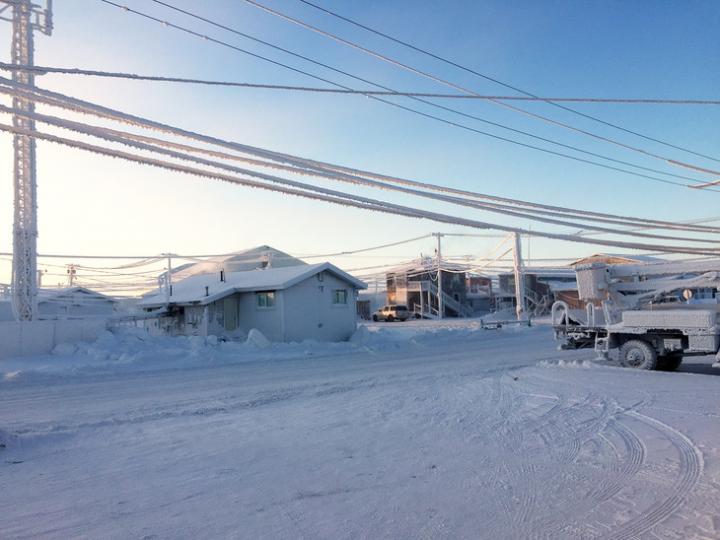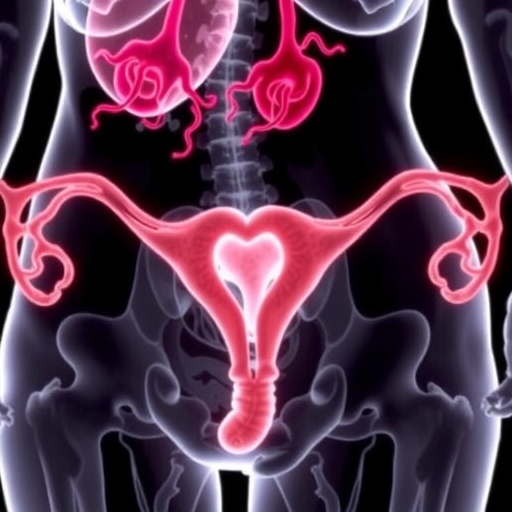
Credit: Ming Xiao’s Research Team, Penn State
With rising temperatures in the Arctic, communities in Alaska’s North Slope Borough are seeing the ground beneath their feet melt away.
“Climate change is thawing the frozen soil,” said Ming Xiao, associate professor of civil and environmental engineering at Penn State. “The borough spends $100 million a year just for repairs to roads, buildings and pipelines. To build resilient infrastructure in the changing Arctic, we need to understand how the soil behaves as it softens.”
Xiao is the lead investigator of a new three-year, $1.2 million project, funded by the National Science Foundation’s “Signals in the Soil” program, that seeks to bury a fiber-optic cable in Utqia?vik, Alaska, the northernmost city in the United States. The 1.5-kilometer cable — commonly used for internet and phone service — will be turned into a long line of vibration sensors to monitor the continuous thawing of the frozen soil, also known as permafrost.
This method for collecting seismic data uses a new technology called a distributed acoustic sensing (DAS) array, which sends laser pulses through the cable to detect the velocity of seismic waves moving through the soil.
“We can get a soil sample and test it in the lab, but that is going to be discrete in separate locations and at a certain time,” Xiao said. “By measuring wave velocity with this method, we can convert that into real-time soil property changes at different locations over time, from minutes to years.”
Co-principal investigator Tieyuan Zhu, assistant professor of geophysics, recently created a DAS array using fiber-optic cables buried on the Penn State University Park campus to monitor near-surface dynamics from events like thunderstorms and flooding. The method will now be applied to a harsher climate.
“This project gives us the chance to demonstrate in Alaska how this novel technology can perform in the permafrost across two years,” Zhu said.
He explained that before the emergence of the DAS array, ground vibrations were examined with “geophones” that use an amplifier and a recording device to measure seismic waves — often artificially created by a hammer pounding the ground. In contrast to the continuous monitoring of the fiber-optic cable, these instruments provide only a “snapshot” of the ground at a certain time. They are also difficult to use in frozen soil and require a human presence in extreme weather.
“In harsh environments, it is very hard to maintain geophones long-term,” Zhu said. “A fiber-optic cable is only one string of line. It is a game-changing instrument.”
Xiao and Zhu will work alongside Eileen Martin, assistant professor of mathematics and of computational modeling and data analytics at Virginia Tech, Dmitry Nicolsky, research associate professor at the Geophysical Institute of the University of Alaska Fairbanks, and Anne Jensen, an archaeologist and long-term resident of Utqia?vik. Together, the team will install the fiber-optic cable and build the DAS system, being careful not to disturb the vegetation and the permafrost.
The cable will connect to power and a data acquisition system in the National Oceanic and Atmospheric Administration Barrow Atmospheric Baseline Observatory in Utqia?vik.
“It will run into the facility and collect data continuously, generating 100 terabytes of data per year,” Zhu said.
With the abundance of data, Xiao explained, the researchers will be able to correlate seismic wave velocity, permafrost temperature and other soil parameters. Eventually, they will use those patterns to predict future behavior of the thawing permafrost, allowing engineers to design and build more resilient Arctic infrastructure.
If the equipment itself proves to be resilient after two years, a long-term monitoring project could ensue.
“The project duration is three years, but we plan to keep the cable embedded in the permafrost,” Xiao said. “Maybe we can go back and measure after 10 years to see how the soil will have changed. This long-term evaluation is going to be really useful and important.”
###
Media Contact
A’ndrea Elyse Messer
[email protected]




